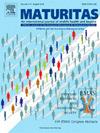Geographical clusters of obesity in France related to complex longitudinal socio-behavioral profiles: findings from the GAZEL cohort
IF 3.9
2区 医学
Q2 GERIATRICS & GERONTOLOGY
引用次数: 0
Abstract
Background/objectives
This study analyzed the temporal evolution of geographic clusters of obesity among employees of the French national gas and electricity company in the GAZEL cohort from 1990 to 2015.
Subjects/methods
The study included 12,798 men and 4590 women (aged 40 to 72 years) followed since 1989. Spatiotemporal clusters of obesity were identified using SaTScan software, and spatial dependence was assessed with the spatial relative risk function in the SPARR package. General estimating equations accounted for correlated observations in clustered or repeated measures data.
Results
SaTScan identified significant obesity clusters primarily in northern France, persisting throughout the study period. In 1990, 35.8 % of participants were in obesity hotspots, peaking at 36.8 % in 1995, then declining to 21.4 % in 2015, as confirmed by spatial relative risk analysis. Despite a stable adjusted mean body mass index, the prevalence of obesity increased, indicating more individuals crossing into obesity. Models showed alcohol and tobacco use were significantly associated with body mass index and spatial clustering, with longitudinal interactions influenced by sex and age.
Conclusions
Although adjusted mean body mass index remained stable from 1990 to 2015, obesity prevalence increased, with persistent clusters in northern France and Paris. The dilution of clusters over time may be influenced by aging and retirement-induced relocations. These findings underscore the importance of monitoring spatial and temporal obesity trends within populations to address the growing obesity problem effectively.
法国肥胖的地理集群与复杂的纵向社会行为概况有关:来自GAZEL队列的研究结果
背景/目的本研究分析了1990 - 2015年GAZEL队列中法国国家天然气和电力公司员工肥胖地理集群的时间演变。研究对象/方法该研究包括12798名男性和4590名女性(年龄在40至72岁之间),自1989年以来一直随访。利用SaTScan软件识别肥胖时空聚类,并利用SPARR软件包中的空间相对风险函数评估其空间依赖性。一般估计方程解释了聚类或重复测量数据中的相关观测值。结果satscan主要在法国北部发现了显著的肥胖群,并在整个研究期间持续存在。空间相对风险分析证实,1990年有35.8%的参与者处于肥胖热点地区,1995年达到36.8%的峰值,2015年降至21.4%。尽管调整后的平均体重指数保持稳定,但肥胖的患病率却在上升,这表明越来越多的人进入了肥胖状态。模型显示,酒精和烟草使用与身体质量指数和空间聚类显著相关,纵向相互作用受性别和年龄的影响。结论1990 - 2015年,虽然调整后的平均体重指数保持稳定,但肥胖患病率上升,并在法国北部和巴黎持续聚集。随着时间的推移,集群的稀释可能受到衰老和退休引起的重新安置的影响。这些发现强调了监测人群中时空肥胖趋势的重要性,以有效解决日益严重的肥胖问题。
本文章由计算机程序翻译,如有差异,请以英文原文为准。
求助全文
约1分钟内获得全文
求助全文
来源期刊

Maturitas
医学-妇产科学
CiteScore
9.10
自引率
2.00%
发文量
142
审稿时长
40 days
期刊介绍:
Maturitas is an international multidisciplinary peer reviewed scientific journal of midlife health and beyond publishing original research, reviews, consensus statements and guidelines, and mini-reviews. The journal provides a forum for all aspects of postreproductive health in both genders ranging from basic science to health and social care.
Topic areas include:• Aging• Alternative and Complementary medicines• Arthritis and Bone Health• Cancer• Cardiovascular Health• Cognitive and Physical Functioning• Epidemiology, health and social care• Gynecology/ Reproductive Endocrinology• Nutrition/ Obesity Diabetes/ Metabolic Syndrome• Menopause, Ovarian Aging• Mental Health• Pharmacology• Sexuality• Quality of Life
 求助内容:
求助内容: 应助结果提醒方式:
应助结果提醒方式:


